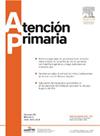Reflections on the applicability of palliative thoracentesis in Primary Care
IF 1.8
4区 医学
Q2 MEDICINE, GENERAL & INTERNAL
引用次数: 0
Abstract
Under normal conditions, there is a small volume of fluid in the pleural space as a result of the balance between its inflow from the pleural capillaries and its drainage through the lymphatics. Pleural effusion (PE) will occur when this balance is disturbed. The initial step in its study is to determine whether PE it is a transudate or an exudate. The first is caused by an alteration in the hydrostatic or oncotic pressure of both the pleural capillaries and the pleural space, without any structural damage to the pleura and with a simple differential diagnosis. In the second, there will be an alteration in fluid flow (increased inflow due to increased permeability of the pleural capillaries or decreased reabsorption due to blocked lymphatic drainage) with damage to the pleural surfaces. Diagnosis is more difficult and more complex biochemical determinations are often used to determine the etiology. A careful clinical history and physical examination together with a good knowledge of the movement of pleural fluid and the information provided by its analysis, obtained by thoracentesis, a simple and safe technique, would allow the family physicians to establish the presumptive diagnosis of the etiology of pleural effusion in about 95% of cases. In this review we provide guidelines as to which specific markers may be useful in the diagnosis of pleural effusion in the Primary Care setting.
关于姑息性胸穿刺在初级保健中适用性的思考
在正常情况下,由于胸膜毛细血管流入和淋巴管流出之间的平衡,胸膜腔中有少量液体。当这种平衡被打破时,就会发生胸腔积液。研究的第一步是确定PE是渗出物还是渗出物。第一种是由胸膜毛细血管和胸膜间隙的静水压力或致瘤压力改变引起的,胸膜没有任何结构性损伤,诊断简单。在第二种情况下,会出现液体流动的改变(由于胸膜毛细血管渗透性增加而流入增加或由于淋巴引流阻塞而再吸收减少),胸膜表面受损。诊断更困难,更复杂的生化测定常用于确定病因。仔细的临床病史和体格检查,加上对胸腔积液运动的良好了解,以及通过胸腔穿刺(一种简单而安全的技术)获得的分析信息,将使家庭医生能够对约95%的病例进行胸腔积液病因的推定诊断。在这篇综述中,我们提供了在初级保健中诊断胸腔积液时可能有用的特定标记物的指南。
本文章由计算机程序翻译,如有差异,请以英文原文为准。
求助全文
约1分钟内获得全文
求助全文
来源期刊

Atencion Primaria
医学-医学:内科
CiteScore
2.90
自引率
8.00%
发文量
156
审稿时长
33 days
期刊介绍:
Atención Primaria es una revista que publica trabajos de investigación relativos al ámbito de la atención primaria de salud. Desde el punto de vista conceptual, Atención Primaria asume el nuevo modelo de atención primaria de salud, orientado no sólo a la curación de la enfermedad, sino también a su prevención y a la promoción de la salud, tanto en el plano individual como en el de la familia y la comunidad. En estos nuevos aspectos que definen el modelo de atención primaria de salud es en los que se centran los trabajos de investigación que publica Atención Primaria, la primera revista de originales española creada para recoger y difundir la producción científica realizada desde los centros de atención primaria de salud sobre cuestiones como protocolización de la asistencia, programas de prevención, seguimiento y control de pacientes crónicos, organización y gestión de la asistencia primaria, entre otros.
 求助内容:
求助内容: 应助结果提醒方式:
应助结果提醒方式:


